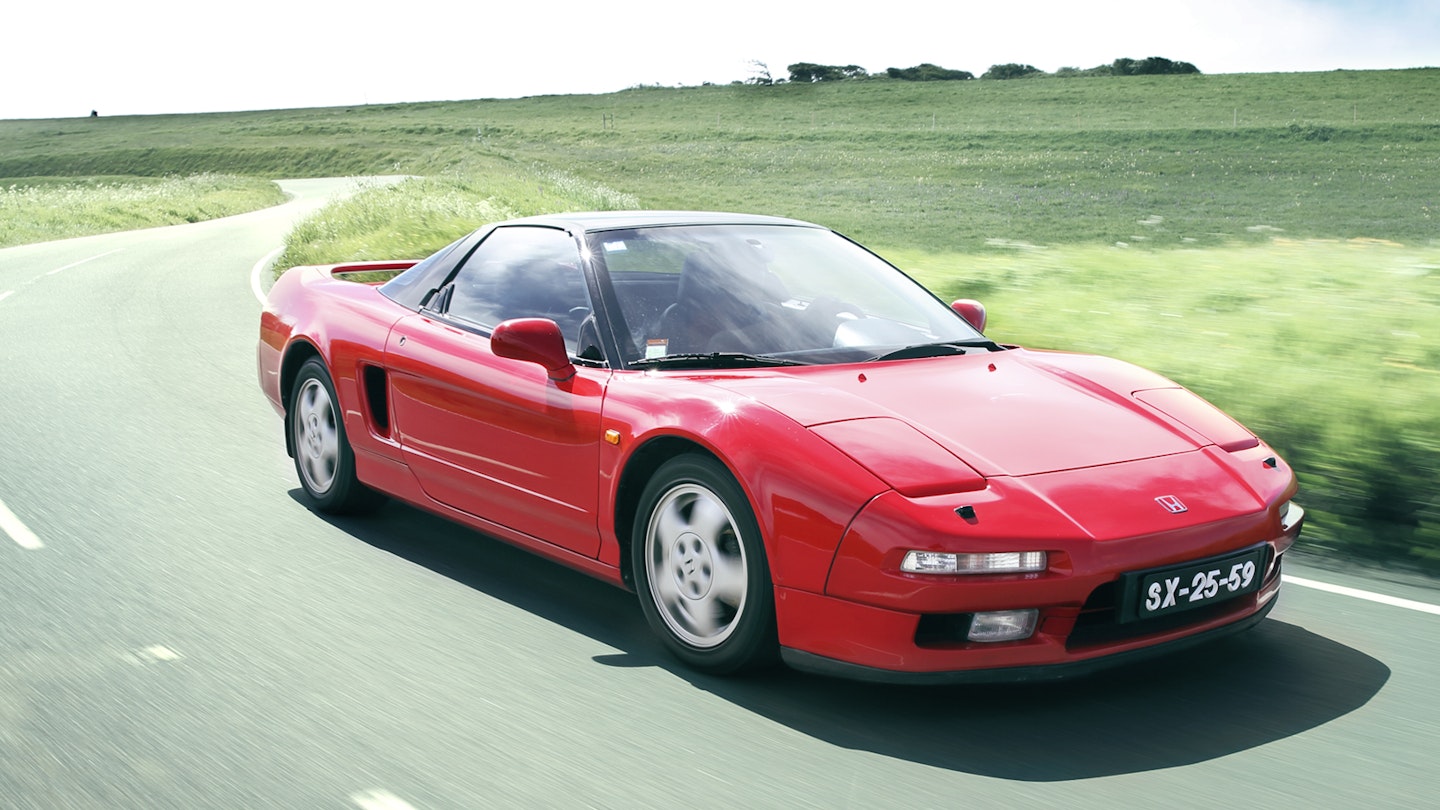Rob McFagan has just refitted the original white-on-black SX-25-59 numberplates to his collection’s pride and joy. The red Honda NSX now looks just as it did when his idol, Formula One superstar Ayrton Senna, sat behind the wheel in the Nineties. Honda gave this NSX to Senna for his World Championship-winning achievements in McLaren-Honda F1 cars. And while his fingerprints may still lie somewhere on this red car, they are figuratively all over every other NSX because Senna helped Honda to fine-tune the model.
The NSX is pure supercar – long, wide, low, straked and spoilered. Even now it’s still a surprise to see the Honda ‘H’ badge on a car of this shape. But in an era when Ferraris were bordering on the shoddy and rear-engined Porsches were still scary, that H was the sign of a supercar you could trust not to break down or break away on the first lift of the throttle.
‘It’s a bit like driving a big Honda Civic,’ says Rob by way of encouragement as I climb over the broad sill and into the black leather driver’s seat. I don’t know about Civic, but the driving position is certainly civilised. You sit low, but the windscreen and door glass dip even lower, deep into the bodyline for maximum visibility. The dashboard sweeps across in an all-embracing arc of vinyl with a single pod sprouting from it to house a cluster of instruments. Controls are typical Honda pragmatism – big buttons for necessary functions – giving the interior a simple and surprisingly modern look. The pleated doorcard inlays are the only clue that this interior was minted in an earlier age when excessive tailoring was the norm.
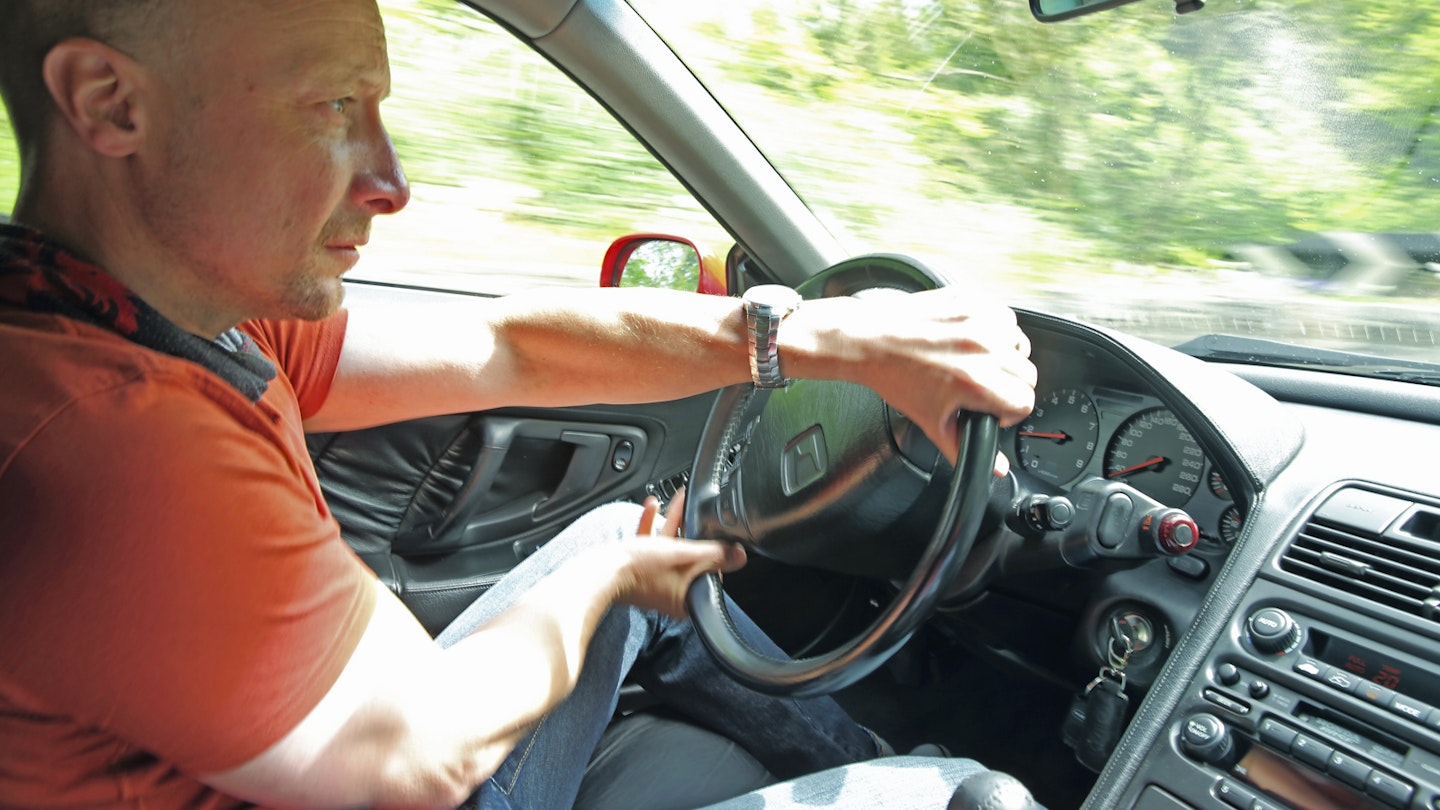
Down at the pedals there’s no supercar-style skewing of feet to the left or right, no lack of space. That’s because the NSX has small 15in wheels up front with slender 205 tyres that don’t compromise the front footwells. At the back are 16in wheels with 225 tyres. The main goal of using smaller wheels at the front was to reduce unsprung weight, but the benefit to the driver in pedal-pushing practicality is huge.
Senna’s road car starts with a suitably F1-esque surge of raw sound. The metal becomes heavier as the revs drop to idle and the NSX grumbles menacingly through wide oval exhaust pipes. The clutch pedal is light, almost too light for a car that looks and sounds this exotic; but the heavy, unassisted steering suggests the car will still make some demands of its driver. Only automatic versions of these early NSXs had power steering.
Police would stop traffic outside the circuit so Senna could leave. He drove this NSX like he drove his F1 car
You only need a minute with the sweet-changing manual five-speed gearbox to realise it matches the car’s intent perfectly with tight ratios to complement the torque curve. That torque is laid on thick from very low revs, with the maximum coming at just 3500rpm, delivering punishing, occasionally grip-defying, acceleration. While the engine speed rises, its note becomes more and more raucous, building to a full-on bellow beyond 6000rpm when the VTEC system swaps the engine’s standard-cam profiles for something with more lift and duration. In an instant the NSX changes character. Where it was just fast, it is now supercar-fast. I’m running out of road. No, really. Here’s a sign for Beachy Head – time to turn around.
During a break a man asks which model of Ferrari I’m driving. When I tell him it’s a Honda he snorts and stalks off, insulted at my ‘sarcasm’. I retreat back into the car. It’s hardly a bind, after all.
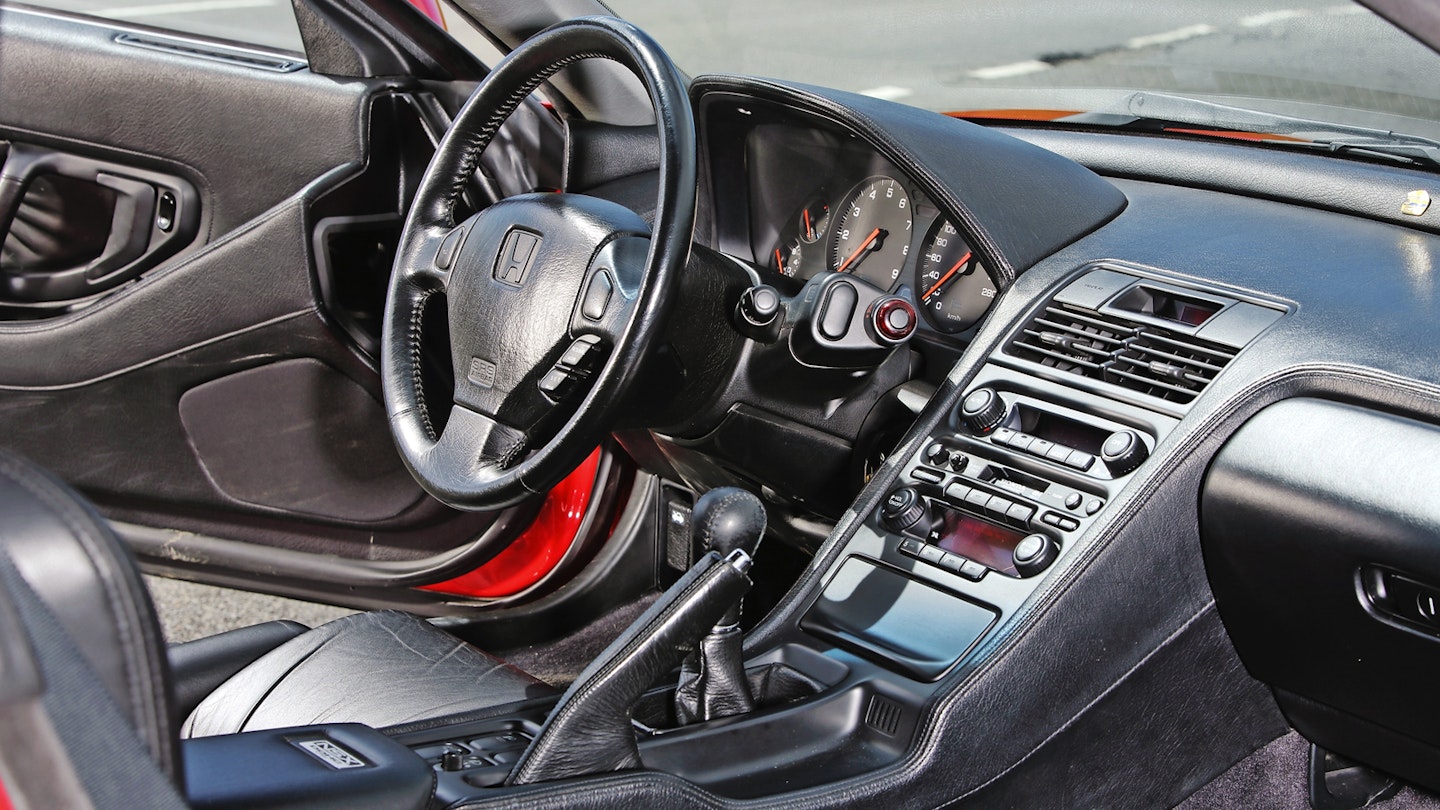
Heavy though the steering is at low speeds, the NSX doesn’t require manhandling through corners like some unassisted supercars. The Honda delivers enough weight through the wheel to engage you completely in the steering process but doesn’t leave you fatigued and you can tackle multiple bends with consummate ease. And speed.
Grip is very good considering the NSX’s rubber would look narrow on a modern hatchback. Bodyroll-free direction changes are helped by the low overall weight; 1340kg for a big chunk of supercar is impressively svelte. But then the NSX is a moving advert for the lightweight miracle of aluminium – its monocoque, body panels and suspension components are all made from the stuff.
Through the low, wide windscreen the edges of the bonnet are constantly in view, which is excellent for lining up for bends. The rear screen is the typical mid-engined letterbox.
As the world blurs past, the NSX’s ride continues to be source of wonder. It’s supple and comfortable on the straights, regardless of surface, and thoroughly composed in corners. Honda spent millions developing the layout – and Senna helped to perfect it.
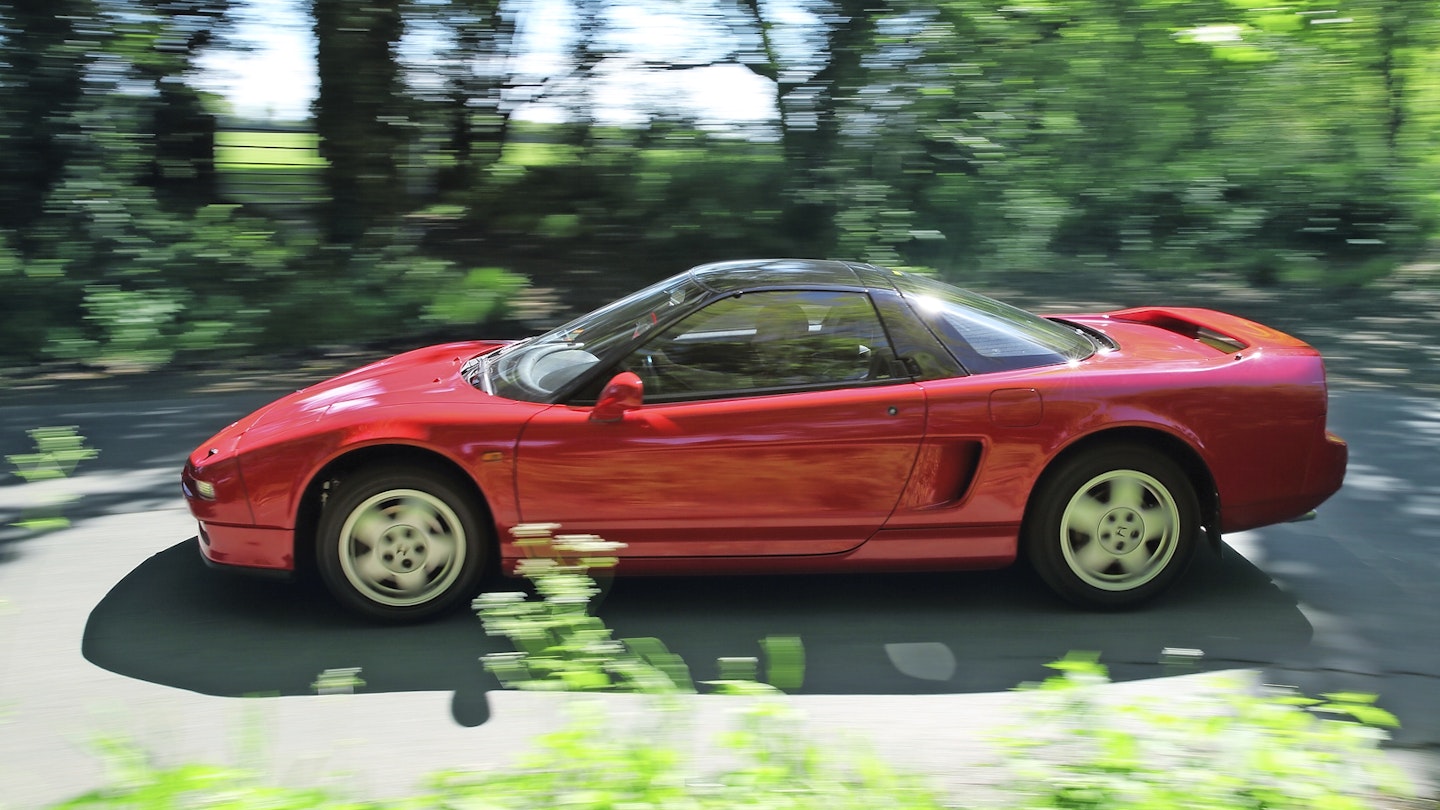
The Senna connection
Senna’s move to McLaren-Honda in 1988 had been incredibly successful. In four years he won three World Drivers’ titles, scored a second place (behind teammate Alain Prost) and helped ensure McLaren-Honda’s dominance of the Constructors’ Championship.
Honda gave Senna this red NSX in 1991 for him to use when he was at his European home in the Algarve, Portugal. While a road car gift from an engine supplier to a driver may seem like a contrived route to gain endorsement, Senna’s connection with the NSX went much deeper. This was one road car he genuinely enjoyed driving – but only after he’d had a hand in the model’s development.
Senna said the prototype was fragile and the chassis lacked stiffness
Two years earlier, when Honda had just worked up the final prototypes of its all-aluminium New Sportscar eXperimental (NSX), it asked Senna to try the car between testing sessions with his F1 car at Suzuka, Japan. But if the engineers were waiting for him to rubber-stamp the NSX, they were disappointed – he said the car was fragile and that the chassis lacked stiffness.
Honda swallowed its pride and went back to testing – with Senna in the cockpit. After eight months the aluminium monocoque was 50 per cent stiffer. Senna also advised on the suspension settings, giving it genuine ride quality in a market of stiffly sprung supercars.
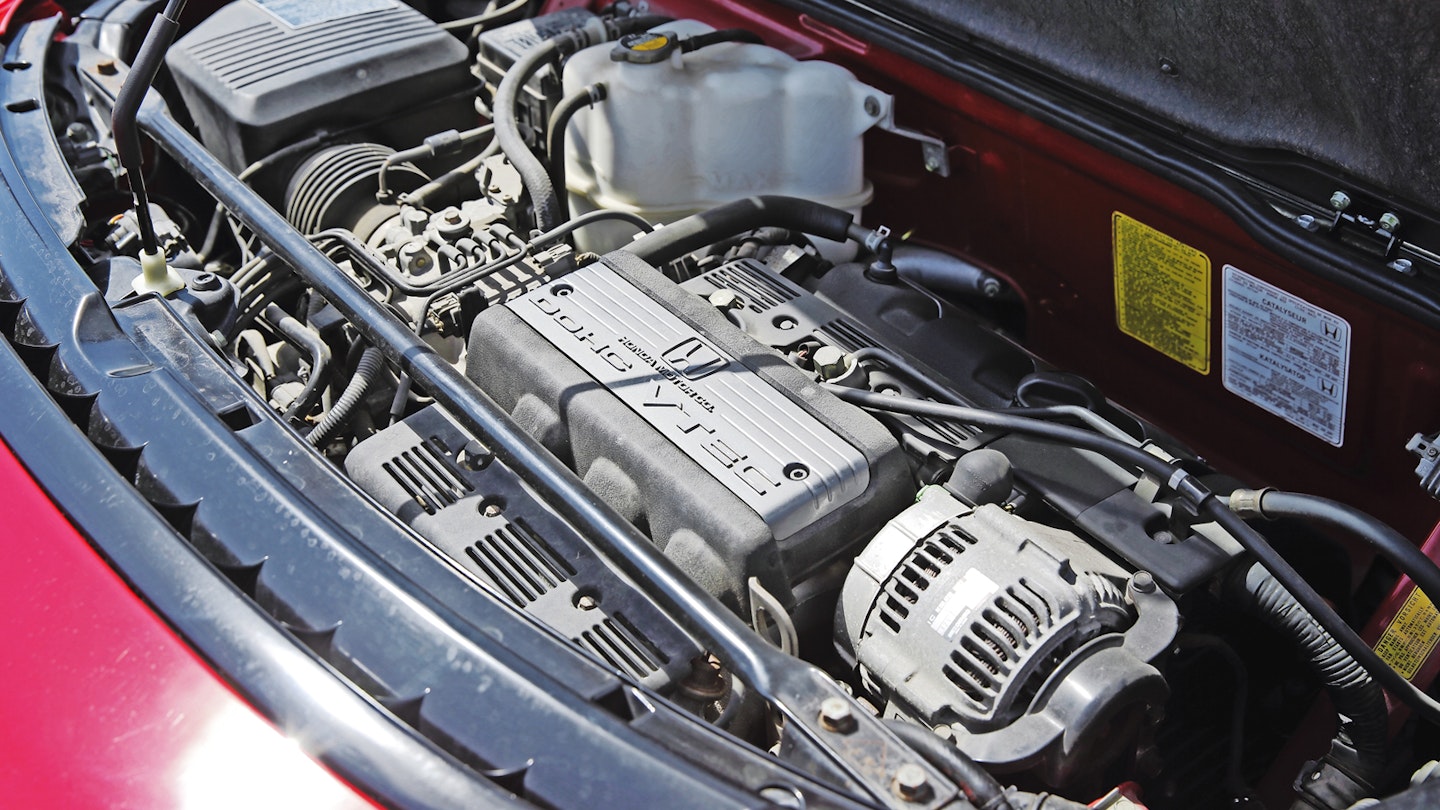
Senna used this NSX through the 1991, ’92 and ’93 seasons, even though by 1993 Honda had left F1 and McLaren was using Cosworth engines. José Almeida, a pit marshal at Portugal’s Estoril circuit in the early Nineties, was used to seeing F1 stars at the wheel of their road cars, but he was deeply impressed with how Senna handled the NSX. ‘The police would stop traffic outside the circuit so Senna could leave. He would leave the place sideways. And the noise! He drove the NSX like he drove his Formula One car.’
Senna’s appreciation of the car he had helped to fine-tune was apparent in the exuberant way he drove it and the enthusiastic way in which he spoke about it. In a 1991 interview with Autocar he said, ‘Normally you cannot drive a sports car every day because of all the uncomfortable things that come with it. This car you can because the fundamental concept is a car to be enjoyed and driven around in any conditions.’
Current World Endurance Championship driver Bruno Senna remembers steering the car at speed through the Algarve while perched on Uncle Ayrton’s lap, with the F1 driver working the pedals. ‘That was the coolest memory of my childhood,’ he says.

Honda took Senna’s NSX back at the end of the 1993 season. It was sold and 28,000 miles was put on the clock before the car was bought and displayed by MS Cars in the Algarve. Senna super-fan Rob McFagan didn’t hesitate when he saw it for sale at £80k in 2013. ‘I’d made an unsuccessful offer to MS for it 18 months earlier. When I saw it in a magazine I flew in the next week and bought it.’ In the intervening days the price had gone up, but Rob wasn’t going to risk losing it.
Before driving it back to England the new owner stopped for photos outside Senna’s old home at Quinta Do Lago. At the gates of 30/31 Sunset, Rua Sado he photographed the red NSX with a black one, also used by Senna, which he has since added to his collection.
The NSX effect
Among contemporary converts to the wide-ranging abilities of the NSX were McLaren’s Ron Dennis and technical director Gordon Murray. The latter has been quoted as saying, ‘The Honda NSX was undoubtedly a landmark car. It awoke not only a lazy Ferrari, but Porsche as well and it sparked advances in usability, ergonomics and handling.’
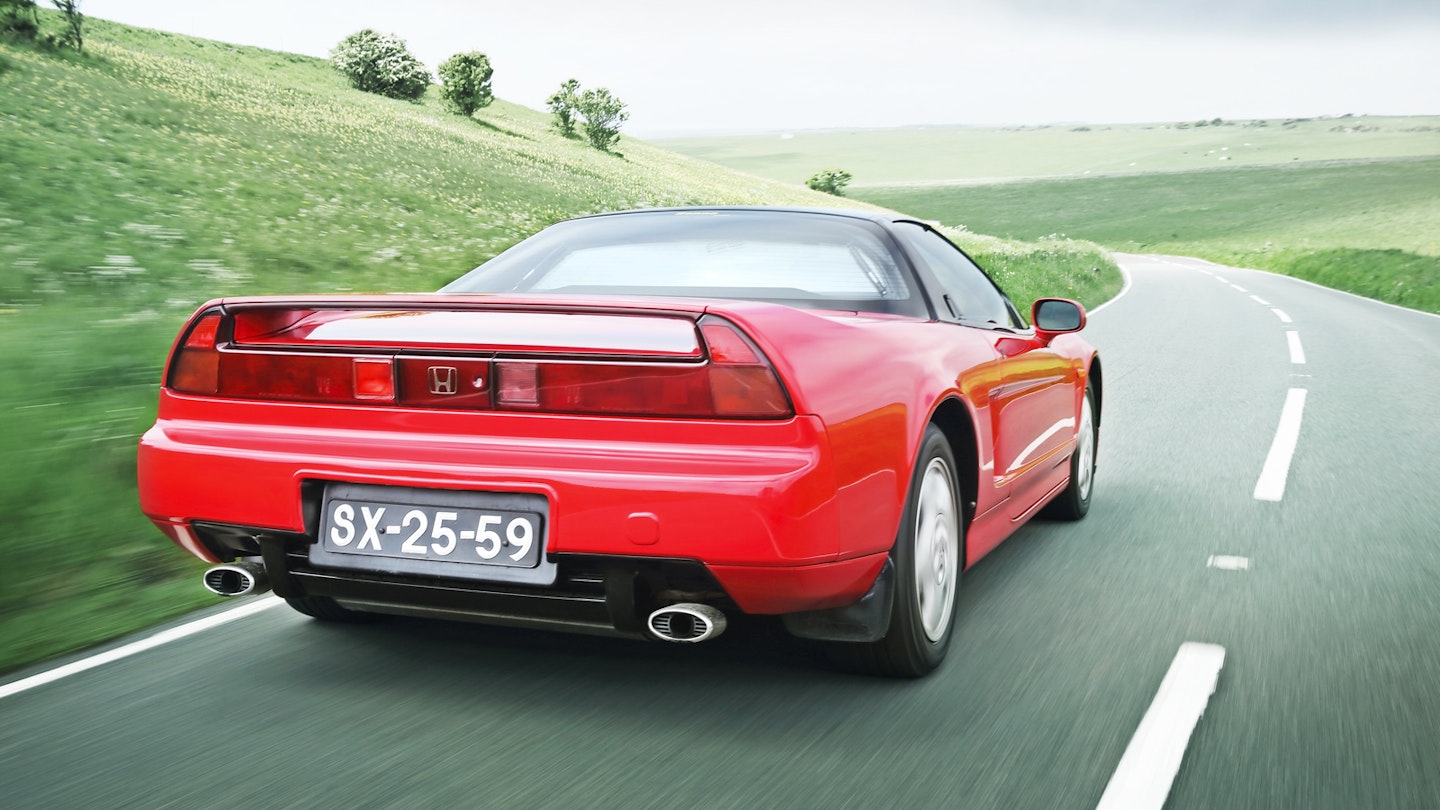
Murray accompanied Senna on a visit to the Tochigi test track in Japan when the NSX was still being developed. He tried the car and was left inspired. He and his team at McLaren had been working on a super-high-performance road car concept that would eventually become the McLaren F1. The idea was to create a compact driver’s car that would be just as easy to handle on city streets as it would be on a long continental journey.
In the NSX, Murray saw not just synergy with his own supercar ideals, but ideas that would eventually influence parts of the F1 project, including areas of the suspension layout and the drive-by-wire throttle system. So in a way Senna’s perseverance at getting the NSX just right lived on after his death.
Ayrton Senna’s ’91 Honda NSX
Engine 2997cc V6, 24-valve, fuel injection Power and torque 270bhp @ 7100rpm; 210lb ft @ 3500rpm Transmission Five-speed manual, rear-wheel drive Steering Rack and pinion Suspension Front and rear: independent, aluminium double wishbones, coil springs, telescopic dampers, anti-roll bar Brakes Vented discs Weight 1340kg (2951lb) Performance Top speed: 162mph; 0-60mph: 5.8sec Fuel consumption 24mpg Cost new £45,000
